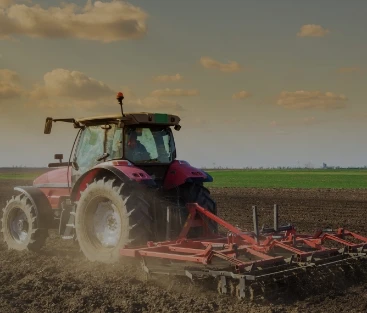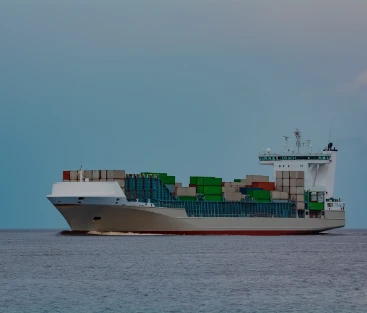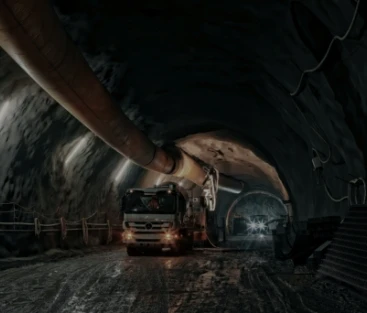Hose Construction
A hose is a reinforced, flexible conduit used to move materials from one point to another or to transmit energy. It is flexible to accommodate motion, alignment, vibration, thermal expansion and contraction, portability, ease of routing, and ease of installation. Most hoses are made up of three elements: a tube, reinforcement, and an outer cover. Each of these components is usually adhered to the adjacent components by bonding agents or thin layers of specially compounded rubber
Tube
The tube is the innermost rubber or plastic element of the hose. The tube may be placed over reinforcing elements as in Figure 1. For suitable service, the tube must be resistant to the materials it is intended to convey. The characteristics of the rubber or plastic compound from which the tube is made and the thickness of the tube are based on the service for which the hose is designed
Reinforcement
Reinforcement can be textile, plastic, or metal, alone or in combination, built into the body of the hose to withstand internal pressures, external forces, or a combination of both. The type and amount of reinforcing material used depends on the method of manufacture and on the service requirements. For example, a residential garden hose does not need the same level of reinforcement as required for high pressure air hose used in construction and mining applications
Cover
The cover is the outer element and can be made of rubber, plastic, metal, or textile materials. The prime function of the cover is to protect the reinforcement from damage and the environment in which the hose will be used. Covers are designed for specific applications and can be made to be resistant to oils, acids, abrasion, flexing, sunlight, ozone, etc.
Manufacturing Materials
The basic materials in the manufacture of hose are rubber, plastics, textile yarns, textile fabrics, and metal in the form of wires and cables. Throughout this book, the term “rubber” will be used in its broadest sense. This will include all elastomeric materials that are compounds of natural or synthetic elastomers or combinations of these materials
Rubber
To provide a wide range of physical properties for specific service needs, elastomers are mixed with various chemicals. Space does not permit discussion of the compounding ingredients or compounding methods, so only the basic elastomers will be discussed. There are many of these available to the hose manufacturer. In addition, many types may be blended in almost unlimited combinations to obtain the most desirable properties.
Fabrics
Textile fabrics used as reinforcement in hose construction provide the strength to achieve the desired resistance to internal pressure or to provide resistance to collapse, or both. The properties of a fabric depend on the construction and the material from which the yarn is made and on the type of weave used. One common hose fabric is woven from warp yarns, which run lengthwise, and filling yarns, which run crosswise. Usually they are woven at right angles to each other. The most common weave is known as “plain weave”. Notice that the warp and filling yarns cross each other alternately. This is done on a relatively simple loom. Other weaves used, though to a lesser degree, are twill, basket weave, and leno. Leno weave is used mainly where the fabric must be distorted in the hose as in certain types of curved hose. Leno also provides a means for better adhesion than other patterns. Woven Cord, is a special type of hose reinforcement. The warp cords are strong while the filling yarn is very fine and merely holds the cords in position. This is often called “tire cord” because this type of construction is commonly used in reinforcing tires. Woven cord provides strength in one direction only. When woven cord is used, a minimum of two layers are applied in alternate directions. To adhere to the tube and cover of the hose, the fabric must be rubberized. The fabric is either frictioned or coated with a thin layer of rubber. Before rubberizing, some fabrics are treated with liquid adhesive
Yarns
Yarns are used in hose for reinforcement of the tube material to provide the strength to achieve the desired resistance to internal pressure or to provide resistance to collapse, or both. The basic yarn properties required for hose reinforcement are: adequate strength, acceptable heat resistance, dynamic fatigue resistance, and satisfactory processability for the various methods of reinforcing hose. Other special properties such as stiffness, adhesion, conductivity, etc., may be developed depending upon the specific hose application. Yarn is available in two basic forms: staple (sometimes referred to as spun yarn) and filament.
Staple
Staple yarn is made by twisting bundles of short fibers to form a continuous yarn. The staple obtains its strength from the binding effect of the twist imparted to the individual fibers. The base staple yarn is called a singles. It is made from fiber bundles twisted together in one direction to form a singles strand. If two or more single yarns are twisted together, usually in a direction opposite that of the singles yarn, the result is a plied yarn. Two or more plied yarns may be twisted to form a cable cord. The strength, elongation, and thickness of yarn are a function of the twist level and the number of fibers in the bundle. Staple yarns may be made from natural or synthetic fibers or a blend of the two. The cotton count system is normally used to designate staple yarn size. The number of “hanks” in one pound is the yarn number. A cotton hank is 840 yards. Therefore, a 2’s staple yarn contains approximately 1680 yards in one pound. The cotton count system is an inverse measure of the linear density of the yarn, i.e., as the yarn number increases the yarn size is decreased
Filament Yarns
Filament yarn is produced by extruding synthetic material through a spinnerette containing hundreds of orifices. The monofilaments from each of the orifices are brought together to form a multifilament yarn. Filament yarns have higher tenacity (strength per unit of weight — grams per denier), in the range of 2 to 3 times that of staple yarn on the same material type and size. Yarn size is normally designated using the denier system (weight in grams of 9000 meters of yarn). The TEX system (the weight in grams of 1000 meters of yarn) is also widely used. Both are direct yarn measurements, i.e., as the number increases, the yarn size increases
Wires
Reinforcing wire is used in a wide variety of hydraulic and industrial hose, primarily where textiles alone do not satisfy the special engineering requirements or the service conditions for which the hose is designed
Stell Wire
Steel wire has strength, high modulus for dimensional stability, fatigue resistance, and low cost, and is the major reinforcement used in high pressure hose and in most suction hose. Steel Wire (High Tensile Low Carbon) Small diameter high tensile steel wire is most commonly used for reinforcement in braided or spiral-wound hose for high pressures and high temperature applications. The wire normally used ranges in size from 0.008 inch to 0.037 inch (0.20 mm to 0.94 mm) in diameter.
Flat Wire Braid
This consists of an odd number of steel wires interwoven to produce a flexible reinforcement. It is used in specialized types of hose, either by itself, or in combinations with other shapes of steel wire. Flat braids of standard sizes are composed of 9, 13, 17 or 21 strands of wire in an “over two, under two” plain braid pattern
Wire Cable
Wire cable consists of multiple strands of round wire. It provides high bursting strength without undue loss of flexibility or crush resistance. Sizes range from 0.047 inch to 0.25 inch (1.19 mm to 6.4 mm) in diameter and are made from high tensile carbon steel wire.
Round Wire
Round is the most commonly used wire shape in hose fabrication. It ranges in size from 0.031 inch to 0.875 inch (0.79 mm to 22.2 mm) in diameter. Round wire is generally made of high tensile carbon steel.
Rectangular Wire
Rectangular wire is most commonly used as a helical reinforcement on the interior of rough bore suction hoses to prevent collapse. It is sometimes used in the body of the hose. Occasionally this type of wire is also used as an external helix embedded in and flushes with the rubber cover to provide protection against cutting and abrasion and to increase crush resistance. Rectangular wire is generally steel, although aluminium may also be used
Half-Round Wire
Half-round steel wire is used mainly as protective spiral armour on the exterior of a hose. It is wound with the flat side against the hose cover to provide maximum surface contact. It is available in stainless steel or steel with tin coated or galvanized finishes.
Wire Finish
Wire finishes for steel wire can be either one of two types, (1) brass drawn finish, or (2) coated finish. The most commonly used finish in the hose industry is brass (drawn finish), or galvanized (coated finish). Other finishes include bronze, liquor, and tin. Helical round wires used as helical wound in the body of a hose may have a drawn copper finish, or may be unfinished (bright). Rectangular steel wires used in the bore of a hose usually have a galvanized finish
Alloy and Non-Ferrous Wires
Under certain service conditions, carbon steel wire is not suitable. An alloy wire is used instead. One of the most commonly used is stainless steel which offers exceptional resistance to corrosion and heat. Where light weight is essential, alloys of aluminium are used.
Static Wires
Static wires and other conductive materials are used in hose to prevent static electricity build up. Wires can be made from many metals including copper, steel, monel, aluminium and tin-coated copper. Static wires may be solid, stranded, or braided
Design Considerations
In designing hose, it is customary to develop a design ratio, which is a ratio between the minimum burst and the maximum working pressure. Burst test data is compiled and the minimum value is established by accepted statistical techniques. This is done as a check on theoretical calculations, based on the strength of reinforcing materials and on the characteristics of the method of fabrication. Minimum burst values are used as one factor in the establishment of a reasonable and safe maximum working pressure. It should be noted that design ratios are dependent on more than the minimum burst. The hose technologist must anticipate natural decay in strength of reinforcing materials, and the accelerated decay induced by the anticipated environments in which the hose will be used and the dynamic situations that a hose might likely encounter in service. Including all considerations, the following recommended design ratios are given for newly manufactured hose:
Care, Maintenance, and Storage
Hose has a limited life and the user must be alert to signs of impending failure, particularly when the conditions of service include high working pressures and/or the conveyance or containment of hazardous materials. The periodic inspection and testing procedures described here provide a schedule of specific measures which constitute a minimum level of user action to detect signs indicating hose deterioration or loss of performance before conditions leading to malfunction or failure are reached. General instructions are also described for the proper storage of hose to minimize deterioration from exposure to elements or environments which are known to be deleterious to rubber products. Proper storage conditions can enhance and extend substantially the ultimate life of hose products
General Care and Maintenance of Hose
Hose should not be subjected to any form of abuse in service. It should be handled with reasonable care. Hose should not be dragged over sharp or abrasive surfaces unless specifically designed for such service. Care should be taken to protect hose from severe end loads for which the hose or hose assembly were not designed. Hose should be used at or below its rated working pressure; any changes in pressure should be made gradually so as to not subject the hose to excessive surge pressures. Hose should not be kinked or be run over by equipment. In handling large size hose, dollies should be used whenever possible; slings or handling rigs, properly placed, should be used to support heavy hose
Storage
Rubber hose products in storage can be affected adversely by temperature, humidity, ozone, sunlight, oils, solvents, corrosive liquids and fumes, insects, rodents and radioactive materials. The appropriate method for storing hose depends to a great extent on its size (diameter and length), the quantity to be stored, and the way in which it is packaged. Hose should not be piled or stacked to such an extent that the weight of the stack creates distortions on the lengths stored at the bottom. Since hose products vary considerably in size, weight, and length, it is not practical to establish definite recommendations on his point. Hose having a very light wall will not support as much load as could a hose having a heavier wall or hose having a wire reinforcement. Hose which is shipped in coils or bales should be stored so that the coils are in a horizontal plane. Whenever feasible, rubber hose products should be stored in their original shipping containers, especially when such containers are wooden crates or cardboard cartons which provide some protection against the deteriorating effects of oils, solvents, and corrosive liquids; shipping containers also afford some protection against ozone and sunlight. Certain rodents and insects will damage rubber hose products, and adequate protection from them should be provided. Cotton jacketed hose should be protected against fungal growths if the hose is to be stored for prolonged periods in humidity conditions in excess of 70%. The ideal temperature for the storage of rubber products ranges from 50° to 70°F (10-21°C) with a maximum limit of 100°F (38°C). If stored below 32°F (0°C), some rubber products become stiff and would require warming before being placed in service. Rubber products should not be stored near sources of heat, such as radiators, base heaters, etc., nor should they be stored under conditions of high or low humidity. To avoid the adverse effects of high ozone concentration, rubber hose products should not be stored near electrical equipment that may generate ozone or be stored for any lengthy period in geographical areas of known high ozone concentration. Hose should not be stored in locations where the ozone level exceeds the National Institute of Occupational Safety and Health’s upper limit of 0.10 ppm. Exposure to direct or reflected sunlight- even through windows should also be avoided. Uncovered hose should not be stored under fluorescent or mercury lamps which generate light waves harmful to rubber. Storage areas should be relatively cool and dark, and free of dampness and mildew. Items should be stored on a first-in, first-out basis, since even under the best of conditions, an unusually long shelf life could deteriorate certain rubber products
Physical Characteristics of Hose
Flexibility and Bend Radius
Flexibility and minimum bend radius are important factors in hose design and selection if it is known that the hose will be subjected to sharp curvatures in normal use. When bent at too sharp an angle, hose may kink or flatten in the cross-section. The reinforcement may also be unduly stressed or distorted and the hose life shortened. The hose should be able to conform to the smallest anticipated bend radius without overstress. The minimum bend radius is generally specified by the manufacturer and is the radius to which the hose can be bent in service without damage or appreciably shortening its life. The radius is measured to the inside of the curvature Textile reinforced hoses have a tendency to kink as the bend radius is reduced. Generally, a helix of wire is used when a hose must with stand severe bends without flattening or Kinking. Some indication of relative hose flexibility can be determined from the manufacturers minimum bend radius recommendations. The bend radius does not necessarily reflect the force required to bend the hose to this radius, which is a major factor in flexibility. Different hose constructions may require significantly different forces to attain the same minimum bend radius Generally, the preferred hose is the more flexible hose, provided all other properties are essentially equivalent. There are exceptions to this as in sand blast hose where minimizing the bending in service increases hose life
Electrical Characteristics of Hose
Conductive Hose
Static wires and conductive rubber components are used in hose to help prevent static electricity build-up and subsequent a discharge as a spark. Electrical engineers differ in opinion on the effects of static electricity and the means of dissipating it. In handling gasoline and other petroleum-based liquids, recognized national associations and companies have conflicting opinions on the need for conductive hoses. Until a consensus is reached among all associations, laboratories, and users and a standard practice is established, it is essential that the user determine the need for static bonded hose based on: (a) the intended use of the hose; (b) instructions from the company’s Safety Division: (c) the insurer; and, (d) the laws of the States in which the hose will be used. Some types of hose include a body reinforcing wire. This wire can be used for electrical continuity provided that proper contact is made between it and the hose coupling. This can be done by extending the body wire to the ends of the hose, or by attaching a light static wire to the outermost coils of the body wire. This lighter wire is led through the ends of the hose and attached to the couplings. In nonwire reinforced hose, a static wire can be included in the hose body. The tendency has been toward a grounding connection completely separate from the hose or to have the tube or cover of the hose conducting. Examples would be sand blast hose with conducting tube or aircraft fuelling hose with a conducting cover. An internal static wire could break or lose contact with the couplings and not be detected visually. This could occur from an unusual stress imposed on the hose
Non-Conductive Hose
In some specific applications, especially around high voltage electrical lines, it is imperative for safety that the hose be nonconductive. Unless the hose is designed particularly to be non-conductive and is so branded, one dare not conclude that it is nonconductive. Many black rubber compounds are inherently and inadvertently conductive. Nonconductive hose is usually made to a qualifying standard that requires it to be tested to verify the desired electrical properties The hose is usually non-black in color and clearly branded to indicate it is designed for non-conductive applications
Hose and Coupling Selection Guide
General
A number of hose specifications have been developed for specific applications in industrial, agricultural or public service. These specifications are based on successful performance of the hose in the field as reported by consumers, manufacturers and governmental agencies. These may be used as procurement specifications or performance standards when the application agrees with the scope of the hose specification. The RMA has published a number of hose specifications which are recommended for use. Often, additional or new requirements may be imposed on hose because of the severity of service conditions, a change in service conditions, a change in the materials handled or in the method of handling, or the development of new uses or procedures. Hose specifications must then be prepared with the supplier and be based on all conditions affecting the expected service and performance of the hose. Generally, a hose manufacturer may have types of hose or can devise new ones which may meet other requirements than those covered by published standards. For best performance, a hose should be selected to meet the service conditions under which it is to be used. Before deciding on size, type, and quality of hose, complete information on the actual service requirements should be examined.
Service Considerations for Hose in critical Applications
Hose is often used in locations and/or to convey materials where property damage or human injury could occur if the hose and/or associate fittings failed while in service. The user must insure that the service conditions are known to himself and to the hose supplier. The improper use of hose or the use of a hose for service applications for which it was not designed may result in serious consequences. Some examples of improper uses of hoses include the following: water hose should not be used for chemicals or solvents; low pressure hose should not be used for high pressure service; only steam hose should be used for steam service; hose for conveying mild chemicals should not be used for strong or concentrated acids which require special types of hose. Temperatures in or around the hose should be known so as not to exceed supplier’s recommendations, etc.








 Cable Protection
Cable Protection
 Water
Water
 Fire Protection
Fire Protection
 Industrial Vacuum
Industrial Vacuum
 Marine
Marine
 Chemical
Chemical
 Air
Air
 Oil
Oil
 Food
Food
 Radiator
Radiator
 Material Handling
Material Handling
 Steam
Steam